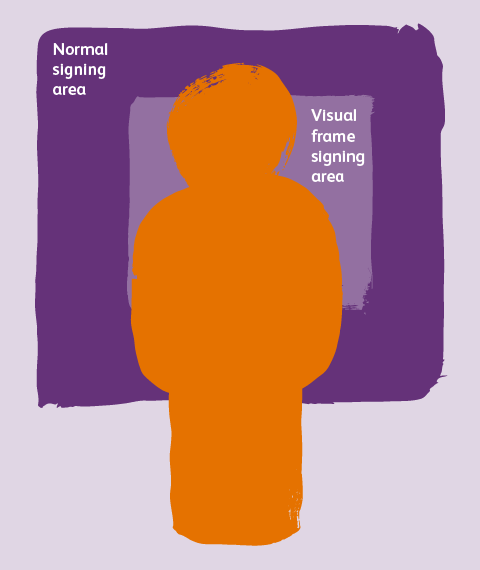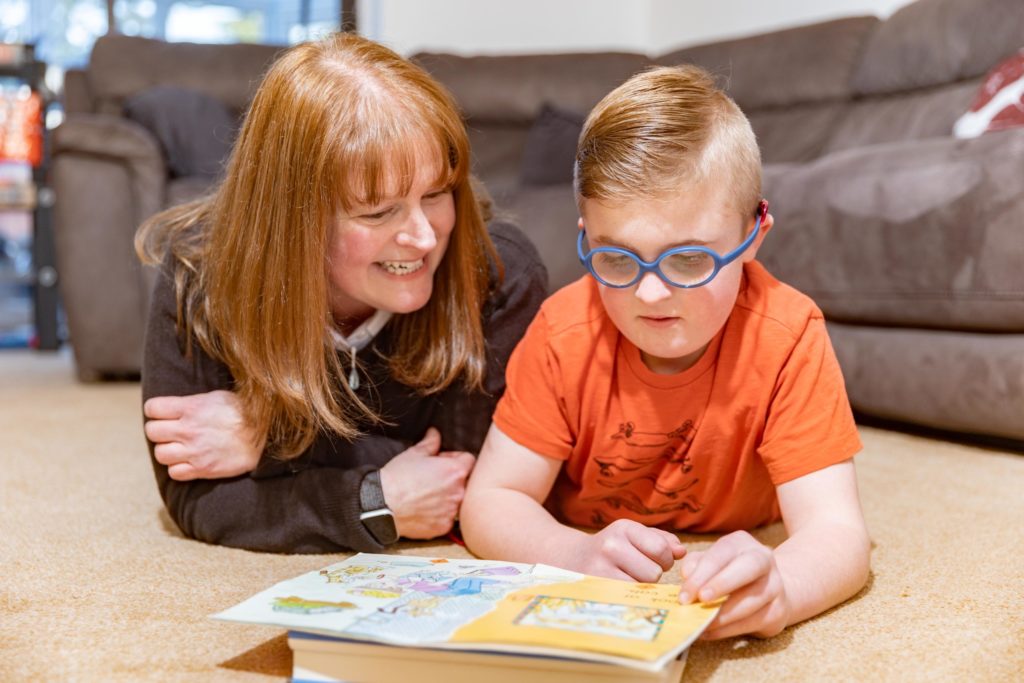Visual frame signing
This page describes what visual frame signing is, who uses it and how to use it in the most effective way.
What is visual frame signing?
With visual frame signing, the person communicating with you uses sign language, making the signs in a smaller area that stays in your smaller field of vision.

How Sense can help
We offer free and impartial information about living with complex disabilities, including deafblindness.
Get in touch by phone, email, post or through a BSL interpreter.
Who uses visual frame signing?
If you have a loss of vision as well as hearing loss, people can communicate with you using visual frame signing.
For example, if you get tunnel vision, the area you can see gets smaller. It’s as if you’re looking through a tunnel and can only see things in a small circle directly in front of you. So someone will sign only in the small circle.
Before you read on…
- You can communicate using a mix of different ways. (We all do!)
- At Sense, we use whatever combination of speech, touch, sign or visual language works best.
- It’s never too late to start.
- Have a go and don’t worry about getting it wrong.
Top tips for visual frame signing
If you have hearing loss and reduced vision
- Find somewhere away from too much background noise and with good lighting – not too dim and not too glaring.
- If you lipread, ask the person communicating with you to sign a little below their face, so you can still see their mouth.
- If you don’t lipread, ask the person to sign in front of their face.
- It’s OK to ask the person signing to change how they sign to what works best for you – for example, do you need them to stand closer or further away?
- Let the person know if you need to touch their hands so that you can keep their movements where you can see them.
If you’re using visual frame signing with someone with hearing loss and reduced vision
- Find somewhere away from too much background noise and with good lighting – not too dim and not too glaring.
- If the person lipreads, sign a little below your face, so they can still see their mouth.
- If they don’t lipread, you can sign in front of your face.
- It’s OK to ask the person what works best for them, so you can change how you sign – for example, do they need you to stand closer or further away?
- Ask the person if they need to touch your hands so that they can keep your movements where they can see them.
Other types of communication
These are the main ways of communicating that we use:
-

Using touch
- Braille uses raised dots to touch.
- Deafblind Manual spells words on to your hand.
- Block alphabet spells letters on to your hand.
- Moon uses raised lines, curves and dots to touch.
- Tadoma uses lipreading by touch.
- Hand-under-hand signing using touch.
-

Using signs
- Sign language.
- Makaton, a simpler version of sign language.
- Objects of reference
-

Using speech
-

Also
- Non-formal communication without speaking, writing or signing.
- Intensive interaction treating everything as communication.
Stay in touch

Get updates about our vital work, including volunteering, making a donation or supporting Sense campaigns.
This content was last reviewed in April 2023. We’ll review it again in 2025.
